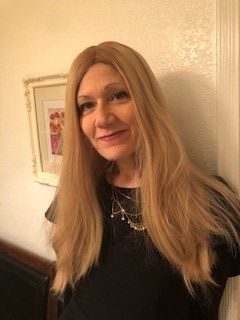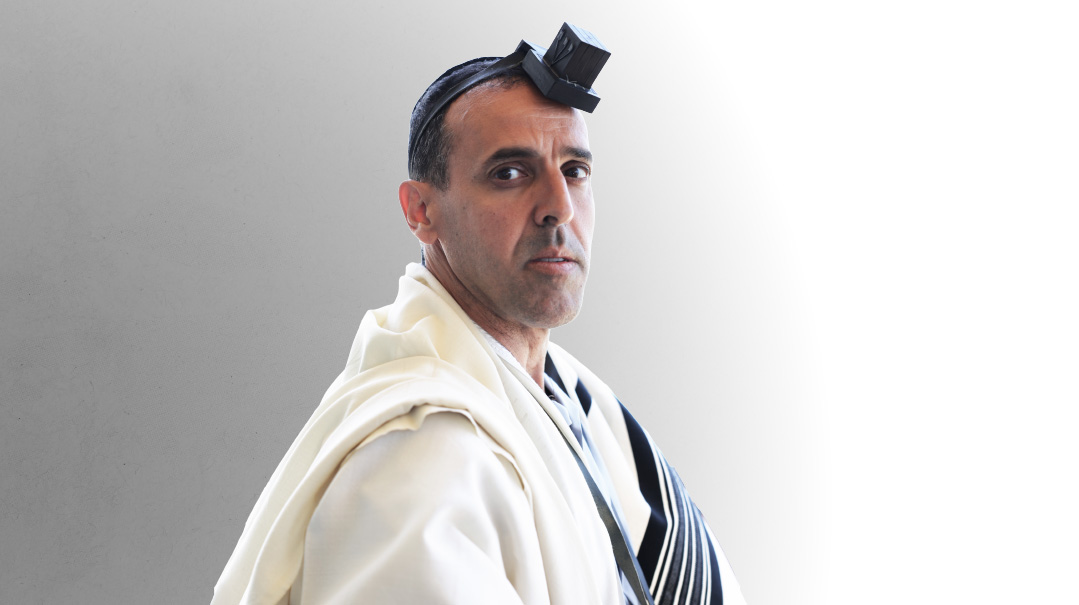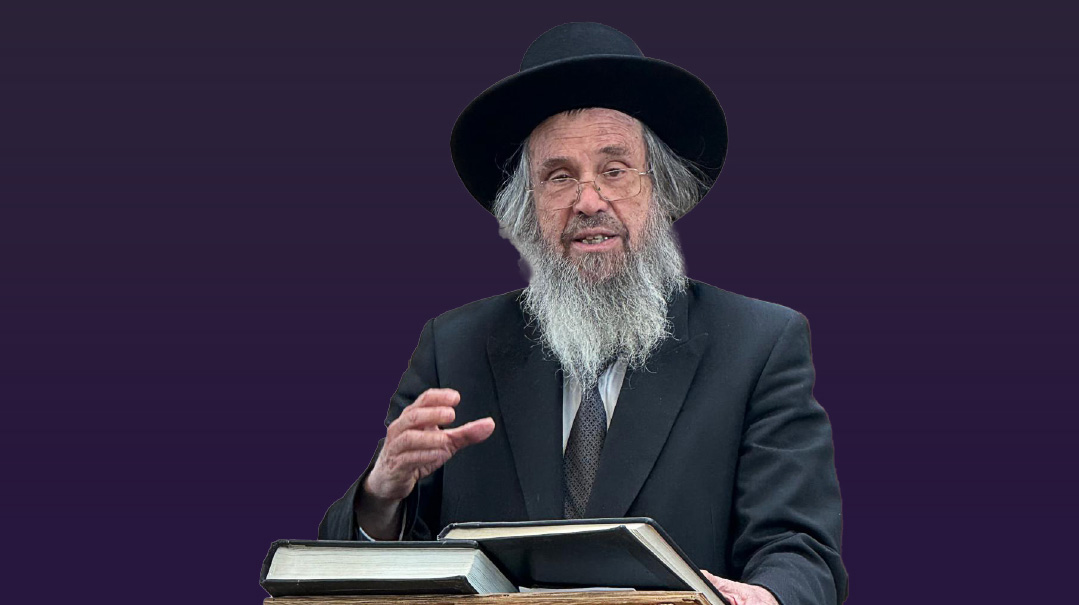Not the Usual 9 to 5


R ivka Korf had taken an interest in graphic design since high school but after she got married she figured she’d get an easy part-time job just to pay the bills.
She was miserable.
“Creative people are just not going to be happy in a typical office job” says Korf 25 who lives in Florida. “We must try to figure out how to use our skills and talents to make parnassah. You have to do something you love. If you’re creative you should try to find a job in a creative field.”
Anne Koffsky an editor and art director at Behrman House Publishers in Springfield New Jersey heard a similar lament — from her children.
“I have two creative boys and one of them recently said to me ‘I have a choice of six jobs: I can be a rabbi, a caterer, a lawyer, a doctor, an accountant or a teacher ’ ” says Koffsky. “This is the world in which he grows up. When he goes to shul he doesn’t necessarily see anyone who does anything other than those six professions for a living.”
More and more Americans are seeing that there are opportunities beyond the traditional professions and they’re not necessarily suffering an income shortfall as a result. Jobs that require creative thinking and artistic talents are more in demand today than ever before. Better yet people can make it in these fields with typical undergraduate and graduate degrees and the help of the many online resources available.
A Business Insider survey recently found that positions that place high importance on “thinking creatively” pay an average annual salary of over $50000. Copy writers for instance who write advertising copy for the promotion of products in publications and broadcast media earn an average annual salary of $69 130. Music directors who conduct and direct instrumental or vocal music performances earn an average annual salary of $59 040. The list goes on: Post-secondary art music and drama teachers; landscape architects; fine artists; set and exhibit designers; and graphic designers. All these and more pay salaries exceeding $50 000.
Meet some people who have taken the leap to non-traditional jobs. It’s not always the easiest route but it can be the most fulfilling especially when your nine-to-five is also your passion.
Rivka Korf
LOCATION: GOLDEN BEACH FLORIDA│PROFESSION: GRAPHIC DESIGNER ILLUSTRATOR PAINTER
Growing up in Kharkov Ukraine, Rivka Korf doodled a lot. Once home from school she used online programs such as Lynda.com to teach herself Adobe Photoshop and Illustrator.
When she was old enough to hang a shingle, Korf 25 started designing fliers for events and camps. After seminary marriage and an unhappy detour in a “just pay the bills” administrative job she knew she had to pursue her passion.
Through contacts and listings in Facebook groups for professional artists, such as, Job Hunt for Heimishe, J-Artist and Jewish Designers Lounge Korf found her current job at AdoramaPix in Brooklyn. Even though she and her husband now live in Florida she continues to design for AdoramaPix in a rented office near her home. In fact she directs two other designers and takes on additional freelance clients on the side.
Korf advises people who want to get into the business to look beyond merely a skill for design and sketching. Computer skills are also vitally important today. Once a person possesses a core competency Korf stresses that every professional commercial artist should develop his or her specific niche — for instance three-dimensional design logos sketches or graphic design using photography.
“You always have to learn new skills to keep up with the competition” Korf says. “You have to cultivate something that stands out.”
Korf says she appreciates her life as a freelancer but it comes with challenges.
“Some artists may want to work freelance to avoid having a boss” Korf says “but the truth is every client you have is another boss and hopefully you have lots of clients. I decided I wanted to work mostly for one company and get a steady paycheck which I eventually found when I started at AdoramaPix.”
Korf loves her life as a mother of a two-year-old daughter graphic artist fine artist and rebbetzin. (She and her husband Rabbi Moishe Korf are youth directors at Chabad of Golden Beach Florida.) Her parents would have preferred she pursue teaching but she wouldn’t have it any other way.
“My mother is naturally an artist but she never used her talents” Korf says. “She always told us that she does better things by teaching which also is a very creative and worthwhile profession.”

Korf advises that it’s healthy to forge one’s own path in life. In her case it meant using her artistic skills for parnassah.
“I don’t think there’s anything wrong with working in creative fields” Korf says. “Hashem wants us to use whatever talents we have for the good and to complete our missions in this world. I love that I can use my creativity in my job.”
Eve Emanuel
LOCATION: BROOKLYN NEW YORK│PROFESSION: FASHION DESIGNER MORE THAN JUST FIG LEAVES
After trying on too many skirts that were too tight too loose or too short Eve Emanuel decided to design one herself.
“I strove to make finely crafted high-quality clothing that fits women well and looks put-together” says Emanuel 49 who lives in Brooklyn.
Emanuel says she was always attracted to clothing and the creative process. “I love to make clothing that is elegant and made for women” she says. Emanuel adds that she finds inspiration for her designs from the shapes and colors in the world around her. She also might see an article of clothing in a store and go home and make a tzanuah version of it.
Emanuel who sells her clothes online and at community events doesn’t have a degree in fashion design but she did learn the basics of sewing while in high school in London and furthered her education with online courses.
“I love to provide women with clothing in which they feel great and relaxed” she says. “To that end I use light fun and ‘humble’ fabrics such as cotton and spandex velvet. I like fabrics that are easy to care for so that women can wear them often.”
Emanuel encourages people who are interested in fashion design to study art and design and then use what they learn to create original styles. And most important: “Always have trust in your talent.”
“Designers should identify and articulate what they like in the world around them,” she says. “Designers should ask themselves how they want to contribute in their own unique ways.”
And what’s her vision? “From the beginning, it was to create fashionable clothing that also happens to be modest,” says Emanuel.
“As tzanuah women, we should design our own patterns, sew our own designs, and create our own fashion industry.” She encourages a design education for girls in high school, where they could learn sketching, drawing, sewing, dress-pattern making, and creating design visions.
“I would love to see more women in the next generation create their own modest clothing,” she says.
David Feld
Location: Los Angeles, California
Profession: Health Care Architect
Cannon Design
“I have always admired the built world, and I enjoy drawing it,” says Dovid Feld, who specializes in architecture for healthcare spaces, such as inpatient hospitals, outpatient treatment centers, and medical office buildings.
Feld, 30, says one of his early inspirations was a mikveh in Berkeley, California, where he was raised.
“I grew up in a chassidic family,” Feld says, “and even at a young age, I went to the mikveh on Erev Shabbos. The mikveh building exemplified the northern California Craftsman style and I admired its interior finishes, redwood paneling and casework, blue tiles, and attractive fixtures. It brought a tranquil warmth to the building, which was designed for a Jewish purpose, and it fulfilled that purpose in a proud, yet understated away. Some buildings develop a kind of soul.”
Feld explains that although drawing is an important skill in his profession, architects also use models and language in their work. “Architecture is a spatial puzzle that we try to solve,” explains Feld. “We are always trying to fit units, rooms, or details into a space.”
As an Orthodox Jew in a non-traditional field, Feld says it’s important that he tries to make a kiddush Hashem. “To me, this means showing respect to everyone around me, standing up for what I believe in, bringing that belief into others’ lives, and influencing everyone around me for the better.”
Feld, who spent six years in post-high school yeshivah and received semichah before attending architecture school, encourages potential architects to make sure they spend whatever amount of time is best for them in yeshivah or seminary before training.
“My advice for a person who has the dream of becoming an architect is: It’s going to be a long road,” Feld warns. “Hold on. Make sure you are very passionate. Architecture is a not an easy career, but of course, it can be very rewarding.”
In that vein, it’s important to have support at home. “My father z”l, who was a rabbi, was supportive of whatever I did, as long as it would bring nachas,” Feld recounts. “My mother has always been, and continues to be, supportive of my creative endeavors, and she always encourages me to make time to learn Torah.”
For Feld, keeping priorities in order is key. “Not wasting the artistic abilities Hashem gives us is important, but we first must keep our Yiddishkeit firmly in place,” he says.
That said, keeping a balance between his home life and his job can be a challenge. “Architecture is not something that is amazingly conducive to home life and a lot of time to learn Torah,” he says, “but after a busy week, Shabbos feels sweet.”
Moria Manning
Location: Los Angeles, California
Profession: Art therapist
“My philosophy is ‘the color on your hands is the mark of a great day,’ ” says Manning, an art therapist at the Summit View School, an institution that educates elementary and high school students with high-functioning learning disabilities.
Manning, 30, got her start in art therapy at Stern College, where she learned how to use art as a visual tool to bring clients’ thoughts to a conscious level. Manning uses clay, water colors, acrylic paints, and other art supplies to provide creative interventions in mental-health treatment. She’s been at it for four years and says she’s found her calling in life.
Manning says she is passionate about her job because she sees how powerful art can be in the healing process. “I also love the sense of accomplishment my clients get from both finishing art pieces and witnessing their own growth and change through their art,” she says.
To become a registered art therapist, one must practice art therapy under the guidance of a supervisor for 1,000 hours. More recently, The American Art Therapy Association has instituted an exam for board certification.
It’s not only for children. Manning says that art therapy can be powerful for all ages because it accesses the non-verbal and subconscious parts of the brain and engages the clients’ senses.
“Making art gives people the opportunity to externalize their internal world through their own autobiographies of images,” Manning says. “When I ask my students to describe their creative work, I can better see and understand exactly what emotional experiences they are trying to access. The visual experience helps us to find words to name feelings that can be hard to express verbally.”
Ann Koffsky
Location: West Hempstead, Long Island
Profession: Art Director
Editor, Behrman House Publisher
If you majored in English and you’re a good writer, a career in writing or editing might be for you, says Koffsky, 44. She says people approach her all the time to ask how they can make a living writing.
“I tell them to write, and write, and keep writing,” she says. “Then get some critiques from editors, writers’ groups, and reliable friends, and edit and write some more. Writing is a hard job, and we must continue to refine whatever we write until it reaches a level of excellence.”
Koffsky, who has written and illustrated 30 children’s books, started out in publishing by freelancing as an author and an illustrator. She also made illustrations for a wide variety of clients, including Hallmark cards, Costco, and Rite Lite Judaica.
She majored in art at Stern College and took classes at the Fashion Institute of Technology. Later, after marriage and children, she went back for more training at Parson’s School of Design in New York.
She advises illustrators who want to train from home to buy an account at Lynda.com, which hosts a number of excellent tutorials. “Online courses and night classes are great options, but whatever training you choose, you have to be disciplined and take yourself as seriously as a law student takes law school,” Koffsky insists. “Many people have natural talent, but they have to work really hard if they want to excel at what they do. And that is the best way to be successful.”
In addition, Koffsky advises those who are interested in editing and publishing to learn other skills, such as proofreading and copy editing. “Every day I’m editing, writing, art directing, and working together with other creative people,” she says. “Helping authors, artists and designers create their best work is the core mission of my job. It is very creative, rewarding and fulfilling work.
More than just a job, Koffsky says she’s proud that her work results in products that have a positive effect in the world.
“I think putting out Jewish books that people have in their homes encourages Jewish engagement,” Koffsky says. “So, I feel great that I get to help wholesome Jewish books make their way out there and into people’s homes.”
Andre Reichmann
Location: Monsey, New York
Profession: Wedding, Fashion, Commercial, Event Photographer
Andre Reichmann Photography
Andre Reichmann, a businessman who enjoyed taking pictures of vacations, family, and friends, decided to become a photographer full-time after he won an international photo contest in 2011.
“To my shock, I came in first place,” says Reichmann, who beat out photographers that shoot for publications like National Geographic, The Washington Post, and People Magazine. “Winning that competition was a real eye-opener. I never thought of myself as a professional photographer before.”
Although busy with his other businesses, Reichmann, who previously studied mechanical engineering and learned at Torah Vodaath for four years, decided to make photography his full-time business at age 54.
Six years later, Reichmann employs a full-time staff of 14 that includes photographers, videographers, artists, and custom-album designers. He’s made his name with an eye for unique juxtapositions and themes that include flowers, graffiti, and urban landscapes, as well as traditional scenes.
“Every photographer has to show the world in a way that is not expected, but still beautiful,” says Reichmann, who last week alone shot seven simchahs, one of his studio’s busiest weeks yet.
For potential future photographers, Reichmann has this advice: Study the work of professional and art photographers you admire. “Figure out what makes their work great — the composition, the lighting, and the shadows — and then carefully, with a lot of attention to detail, recreate what you like.”
In addition to studying professional work, photographers should seek internships with photographers they admire, advises Reichmann, who says that all of his full-time employees started out with him as interns and assistants. It’s also important for beginning photographers to take photos of a variety of subjects, such as children, teenagers, adults, couples. One way to gain experience is to shoot the weddings of friends and family at no charge. Business might be slow at first, Reichmann says, but it’ll pick up eventually. In his first year, he shot 17 weddings. Last year, he shot 140.
With time, client referrals lead to more business. Winning photography contests is also a great way for photographers to build their reputations.
“Good word of mouth is everything for building a photography business,” Reichmann explains.
And at the end of the day, the job should be a labor of love through which the photographer gives as much as he gets. “Photographers’ work should only increase their clients’ simchah” he says. “With time, one thing leads to another.”
(Originally featured in Mishpacha, Issue 644)
Oops! We could not locate your form.







